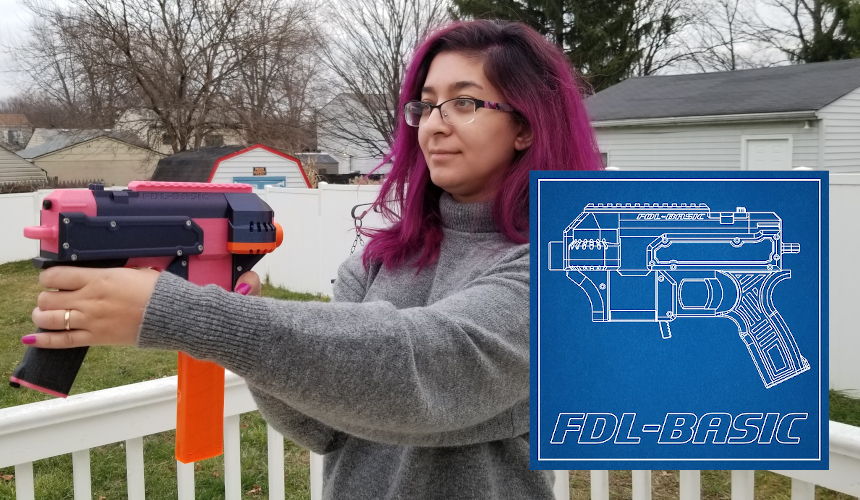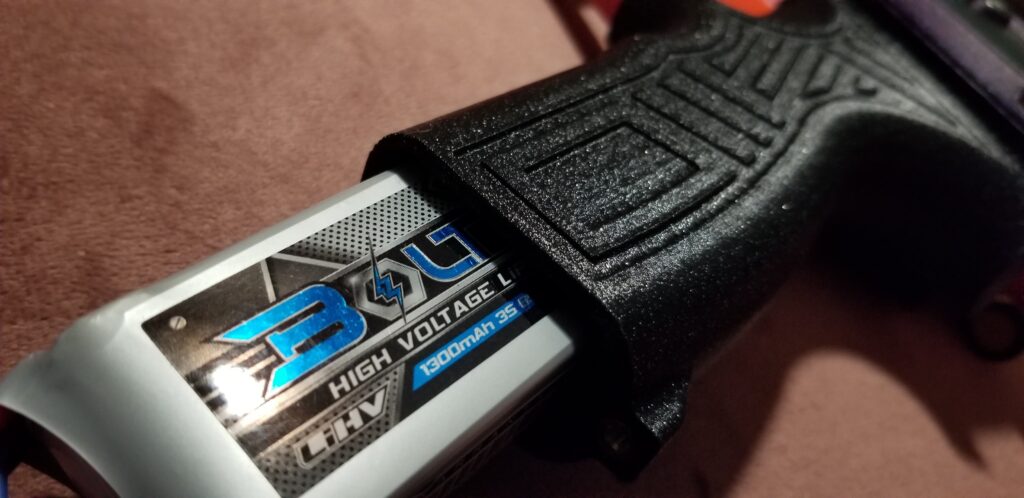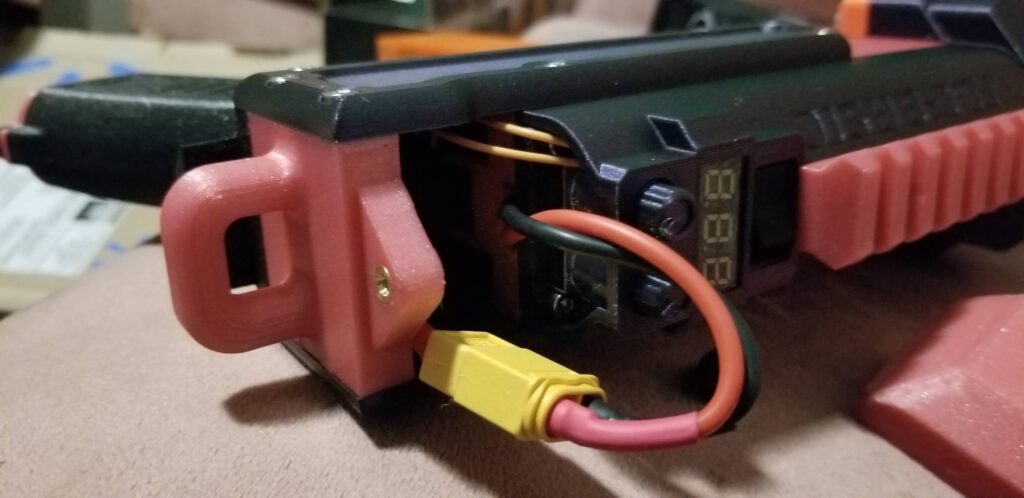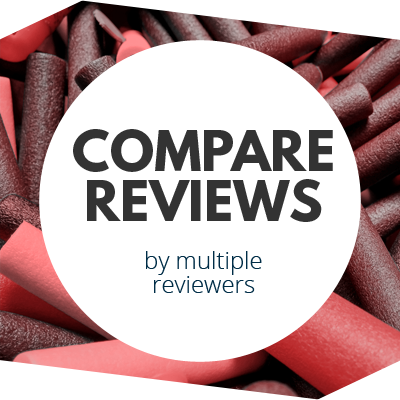

FDL-Basic
ProjectFDL
$305 base cost
100-180fps (variable)
1-15 darts per second
A great and versatile blaster, if you're into custom 3d-printed, brushless blasters.
FDL-Basic Review
February 1, 2021Back in December, I had the chance to buy an FDL-Basic beta unit ahead of the general release (making for a great birthday gift for the fiancée). Between the two of us, we’ve put many clips of ammo through the blaster, seeing if anything went wrong or if anything could be improved. In the end, the Basic is a great do-everything blaster. Granted, you could spend the same amount of money or time on several blasters for different game types. But if you’re willing to spend the money, you’ll be happy with the versatility of this blaster. Especially when compared to the price of the FDL-3 before it.
Less Is More
 The FDL-Basic is a simple, pistol-format 3d-printed blaster. Like its predecessors, it’s powered by an Arduino, and uses brushless motors to fling darts out at high speed. Unlike previous entries, it has also been simplified. Gone are the OLED screens, settings menus, and presets, as well as support for multiple ammo types. Instead, the FDL-Basic (aside from the trigger and on/off switch, of course) has just a voltmeter, a motor speed knob, and a rate of fire knob. I know I barely use any of the other settings on my Vortex-FDL (which uses FDL-3 hardware), so just the essentials is a better fit. And with the blaster only made for short darts and Talon magazines, it now just focuses on the greatest common denominator, especially now that short darts are more common.
The FDL-Basic is a simple, pistol-format 3d-printed blaster. Like its predecessors, it’s powered by an Arduino, and uses brushless motors to fling darts out at high speed. Unlike previous entries, it has also been simplified. Gone are the OLED screens, settings menus, and presets, as well as support for multiple ammo types. Instead, the FDL-Basic (aside from the trigger and on/off switch, of course) has just a voltmeter, a motor speed knob, and a rate of fire knob. I know I barely use any of the other settings on my Vortex-FDL (which uses FDL-3 hardware), so just the essentials is a better fit. And with the blaster only made for short darts and Talon magazines, it now just focuses on the greatest common denominator, especially now that short darts are more common.
 Alas, I guess I’ll have to use other things to fulfill my alternative ammo shenanigans…
Alas, I guess I’ll have to use other things to fulfill my alternative ammo shenanigans…
The blaster itself is quite comfortable, with a large handle that also houses the lipo battery you decide to use. There are actually two removable doors, one for inserting the battery, and the other for connecting the wire leads.
 At the front, there’s a small forward grip; if you use the blaster two-handed, it’s easiest to wrap around the grip and part of the mag, with a thumb sticking up behind the motor cage. I personally prefer larger grips, but it’s perfectly serviceable. Meanwhile, the back has a simple hook loop for mounting a sling (a stock option should be available).
At the front, there’s a small forward grip; if you use the blaster two-handed, it’s easiest to wrap around the grip and part of the mag, with a thumb sticking up behind the motor cage. I personally prefer larger grips, but it’s perfectly serviceable. Meanwhile, the back has a simple hook loop for mounting a sling (a stock option should be available).
Performance
 The fps and rate of fire are both variable, as designed. In any case, my blaster goes from 100-180fps averages with Adventure Force Pro short darts, depending on the knob settings. Meanwhile, the rate of fire ranges from 1-15 darts per second. This is a full-auto only blaster, but between the knob settings and trigger discipline, it’s not hard to just do single shots.
The fps and rate of fire are both variable, as designed. In any case, my blaster goes from 100-180fps averages with Adventure Force Pro short darts, depending on the knob settings. Meanwhile, the rate of fire ranges from 1-15 darts per second. This is a full-auto only blaster, but between the knob settings and trigger discipline, it’s not hard to just do single shots.
In any case, the blaster has been incredibly consistent and accurate so far.
Gameplay
I’ve already used the blaster in a few small wars and other test settings, and it’s performed quite well. Granted, that depends on whether I’m allowed to use it – it’s not my blaster, after all.
Final Thoughts
Is the FDL-Basic worth paying $300+? It’s an amazing, worry-free blaster, so if you are going to use it all the time, it’s probably a great investment. If you’re like me, and look at a competitive game as a prime opportunity to use Ultra blasters or a RevReaper, it might not be as great a choice on that basis. In any case, if you use the blaster, you’re going to be pleased with it. And being the most affordable FDL blaster yet certainly helps.

